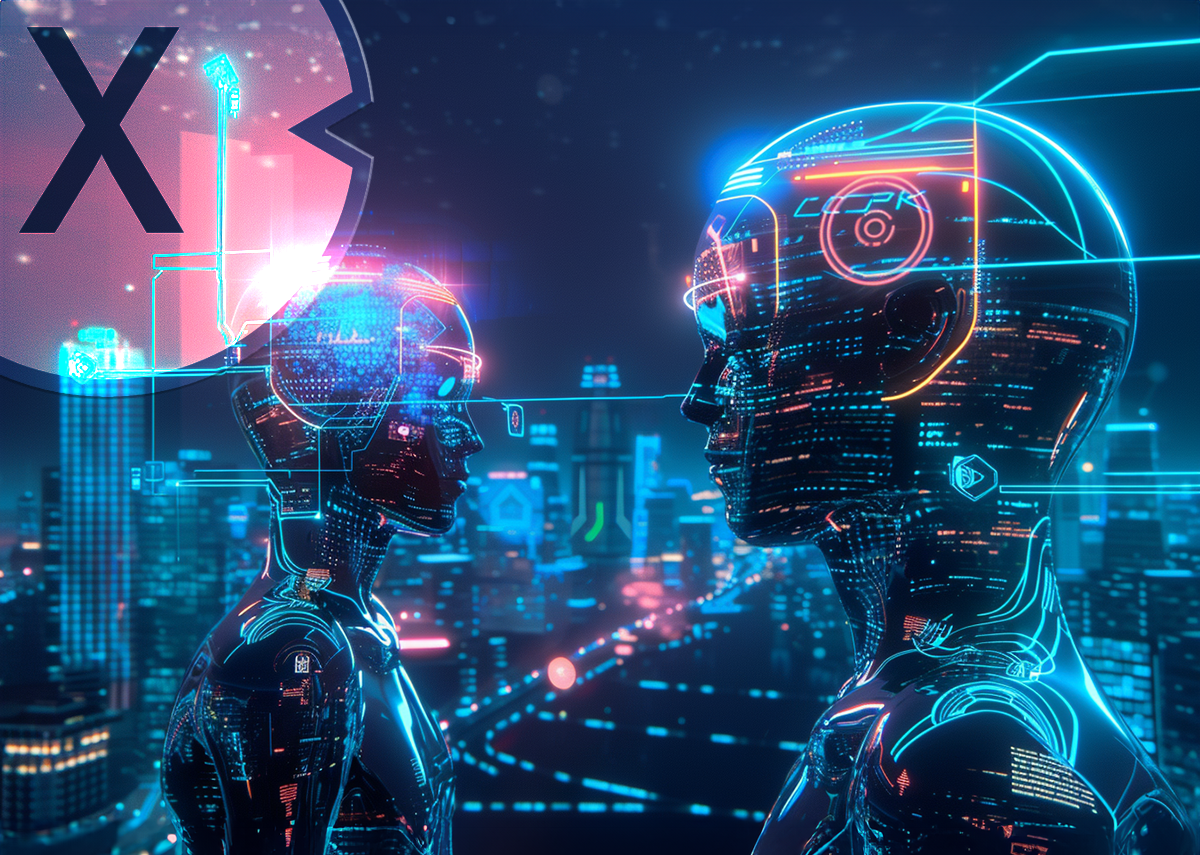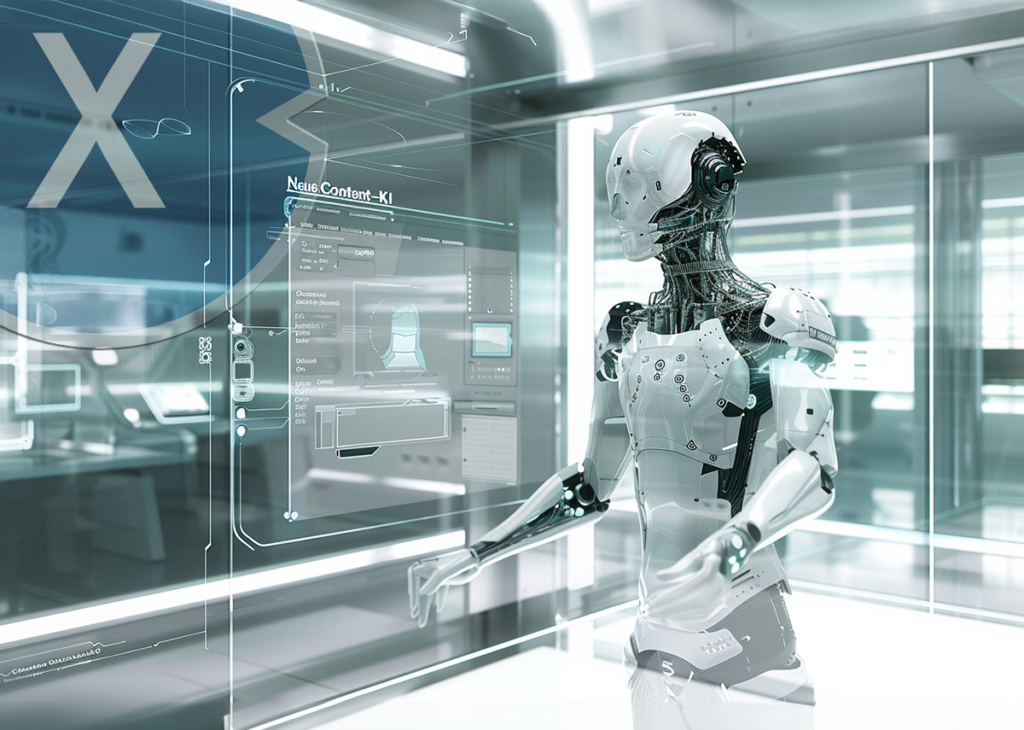AI language models BERT and GPT. Which companies are behind it, what exactly can they do and what are the differences? | o1 +
Language selection 📢
Published on: October 11, 2024 / update from: October 11, 2024 - Author: Konrad Wolfenstein

An overview of the AI language models BERT and GPT and their importance in modern technology - Image: Xpert.Digital
🌍💬 BERT and GPT: How AI language models are transforming communication
🤖✨ The AI language models BERT and GPT
An insight into the technologies that are changing our lives!
The AI language models BERT and GPT have revolutionized the world of natural language processing (NLP) in recent years. They are at the heart of numerous applications that impact our daily lives, from search engines to voice assistants to automated translations. But which companies are behind these technologies, what exactly can they do, and what are the differences between them?
Suitable for:
- Is generative AI a content AI or solely an AI language model, and what other AI models are there?
- Why content AI is also a generative AI model, but not always an AI language model - discriminative and generative AI
🌐 BERT: Bidirectional Encoder Representations from Transformers
Company behind BERT
The technology giant Google is behind BERT. As one of the leaders in AI and machine learning, Google introduced BERT to the public in 2018. The development of BERT was a milestone in NLP research and has influenced numerous applications inside and outside of Google.
What is BERT and what can it do?
Bert stands for “Bidirectional Encoder Representations from Transformers”. It is a pre -trained voice model that aims to understand the context of words in a text by taking the information from both the left and from the right context of a word. This distinguishes it from previous models that have only read texts in one direction.
The bidirectional nature of BERT allows the model to capture deeper connections and meanings in language. It is trained through two main methods:
1. Masked Language Modeling (MLM)
This involves masking randomly selected words in a sentence and the model tries to predict those words based on the context.
2. Next Sentence Prediction (NSP)
The model learns to understand relationships between sentences by predicting whether one sentence follows another.
Applications of BERT
BERT has led to significant performance improvements in many NLP tasks, including:
Question and answer systems
Improved ability to extract answers to questions from text.
Text classification
More precise categorization of documents and messages.
Sentiment analysis
Better recognition of emotions and opinions in texts.
Named Entity Recognition (NER)
More accurate identification of names, places, organizations, etc.
Through its open source release, Google has enabled researchers and developers to customize and optimize BERT for a variety of applications.
🚀 GPT: Generative Pre-trained Transformers
Company behind GPT
The GPT models were developed by OpenAI, a research company dedicated to developing and advancing friendly artificial intelligence. OpenAI was founded in 2015 and has since achieved several breakthroughs in machine learning.
What is GPT and what can it do?
GPT stands for “generative pre-trained transformer”. In contrast to Bert, which is bidirectional, GPT is a unidirectional model that generates texts from left to right. The model specializes in creating human -like texts by pre -training on extensive data records.
The different versions of GPT (GPT, GPT-2, GPT-3 and GPT-4) have each increased the capabilities and size of the model. GPT-3 and GPT-4 in particular have attracted worldwide attention due to their impressive text generation capabilities.
Applications of GPT
GPT can be used in a variety of contexts including:
Automated text generation
Writing articles, stories or poems.
Chatbots and virtual assistants
Conduct conversations with users naturally.
translation
Translating texts between different languages.
Code generation
Writing program code based on natural language descriptions.
Summary of texts
Creating short versions of long documents.
GPT's ability to generate contextually relevant and coherent text has made it a powerful tool in many industries.
⚖️ Differences between BERT and GPT
1. Architecture and training methods
BERT is bidirectional and focuses on understanding text by simultaneously considering the context before and after a word. It uses MLM and NSP as training methods.
GPT is unidirectional and specializes in generating text by predicting words sequentially. It uses an autoregressive method where each word is predicted based on the previous words.
2. Areas of application
BERT is mainly used for comprehension tasks that involve understanding the content and meaning of texts.
GPT is used for generation tasks that involve producing new text.
3. Company and philosophy
With BERT, Google is focusing on improving machines' ability to understand language, which feeds directly into products like Google Search.
OpenAI with GPT aims to develop an AI capable of generating human-like texts and completing complex tasks, with a strong focus on ethical considerations.
4. Model size and accessibility
BERT has been released as open source, which has encouraged research and development throughout the community.
GPT, especially in the newer versions, is less accessible due to its size and complexity. OpenAI offers access via APIs to maintain control over usage and prevent abuse.
🏢 The importance of the companies behind the models
Google and BERT
Google developed BERT to improve the accuracy and relevance of its search engine. By better understanding search queries and website content, Google can provide its users with more relevant results. The open source release of BERT has also enriched the research community.
OpenAI and GPT
With GPT, OpenAI has shown how powerful generative models can be. With the release of GPT-3 and GPT-4, OpenAI has fueled the discussion about the possibilities and risks of AI. OpenAI follows a controlled release strategy to ensure the technology is used responsibly.
⚠️ Ethical considerations and challenges
With the increasing performance of language models such as BERT and GPT, ethical questions also arise:
Misinformation
GPT's ability to generate persuasive text could be abused to spread misinformation or fake news.
Bias and discrimination
When models are trained on biased data, they can reproduce or reinforce existing biases.
data protection
The use of large amounts of data to train models raises questions about the protection of personal data.
Both Google and OpenAI are aware of these challenges and are working on measures to minimize risks. OpenAI, for example, emphasizes the need for safe and responsible AI development and has established guidelines for the use of GPT.
🔮 Future prospects
The development of BERT and GPT marks just the beginning of a new era in AI and NLP. Future models could combine the strengths of both approaches to create even more powerful and versatile tools.
Possible developments
Hybrid models
Combination of bidirectional understanding and generative ability.
Adaptation to specific domains
Training models for specialized areas such as medicine or law.
Improved efficiency
Developing models that require fewer resources while still providing high performance.
Stronger ethical frameworks
Establishment of standards and guidelines for the responsible use of AI.
🌟 Advances in natural language processing
BERT and GPT are impressive examples of advances in natural language processing. They show how machines are increasingly able to understand and generate human language. The companies behind these models, Google and OpenAI, play a crucial role in shaping the AI landscape.
While BERT focuses on understanding and interpreting language, GPT focuses on generating text. The differences in their architectures and application areas make them complementary tools in the NLP world.
The future certainly holds further exciting developments. With responsible research and ethical consideration, BERT, GPT and their successors can help create technology that improves people's lives while addressing the challenges that come with such powerful tools.
📣 Similar topics
- 📢 The future of AI: BERT and GPT in language processing
- 🌐 AI revolution: BERT and GPT in comparison
- 🚀 BERT vs. GPT: The best AI language models at a glance
- 🔍 The companies behind BERT and GPT: Google and OpenAI in focus
- 💡 Applications of BERT and GPT in our everyday life
- ⚖️ BERT and GPT: Differences in architecture and application areas
- 🏢 Google and OpenAI: drivers of AI development
- 🌟 Ethical challenges when using BERT and GPT
- 🔮 Future prospects for AI language models
- 📚 Advances in Natural Language Processing: What's Next?
#️⃣ Hashtags: #BERT #GPT #KILanguage Models #NLP #KIEthicalConsiderations
🤖📚🏢 New content AI o1 from OpenAI: A significant advance in AI technology – The “thinking” AI model
OpenAI is advancing the world of artificial intelligence with its latest model o1, which represents a significant advance in AI technology. This innovative system marks a turning point in the development of language models and opens up new possibilities for human-machine interaction.
More about it here:
We are there for you - advice - planning - implementation - project management
☑️ Industry expert, here with his own Xpert.Digital industry hub with over 2,500 specialist articles
I would be happy to serve as your personal advisor.
You can contact me by filling out the contact form below or simply call me on +49 89 89 674 804 (Munich) .
I'm looking forward to our joint project.
Xpert.Digital - Konrad Wolfenstein
Xpert.Digital is a hub for industry with a focus on digitalization, mechanical engineering, logistics/intralogistics and photovoltaics.
With our 360° business development solution, we support well-known companies from new business to after sales.
Market intelligence, smarketing, marketing automation, content development, PR, mail campaigns, personalized social media and lead nurturing are part of our digital tools.
You can find out more at: www.xpert.digital - www.xpert.solar - www.xpert.plus
























